Cable Force Health Monitoring of Tongwamen Bridge Based on Fiber Bragg Grating
Abstract
:1. Introduction
2. Monitoring Method and FBG Vibration Sensor
2.1. Measurement Method
2.2. Design of FBG Vibration Sensor
3. Monitoring Results
4. Conclusions
Acknowledgments
Author Contributions
Conflicts of Interest
References
- Chan, T.H.T.; Yu, L.; Tam, H.Y. Fiber Bragg grating sensors for structural health monitoring of Ting Ma bridge: Background and experimental. Eng. Struct. 2006, 28, 648–659. [Google Scholar] [CrossRef]
- Richard, H.S.; Pradipta, B.; Sanjay, C. Commissioning and evaluation of a fiber-optic sensor system for bridge monitoring. IEEE Sens. J. 2013, 13, 2555–2562. [Google Scholar]
- Guo, Y.; Kong, J.; Liu, H. Design and Investigation of a Reusable Surface-Mounted Optical Fiber Bragg Grating Strain Sensor. IEEE Sens. J. 2016, 16, 8456–8462. [Google Scholar] [CrossRef]
- Wang, H.; Zhou, H.; Gao, H. Fiber grating acceleration vibration sensor with double uniform strength cantilever beams. J. Optoelectron. Laser 2013, 24, 635–641. [Google Scholar]
- Yang, D.; Du, L.; Xu, Z. Magnetic field sensing based on tilted fiber Bragg grating coated with nanoparticle magnetic fluid. Appl. Phys. Lett. 2014, 104, 061903. [Google Scholar] [CrossRef]
- Tong, Z.; Wang, J.; Zhang, W. Simultaneous measurement of refractive index, temperature and strain based on core diameter mismatch and polarization maintaining FBG. Optoelectron. Lett. 2013, 9, 238–240. [Google Scholar] [CrossRef]
- Mousumi, M.; Tarun, K.G. Fiber Bragg gratings in structural health monitoring-Present status and applications. Sens. Actuators A Phys. 2008, 147, 150–164. [Google Scholar]
- Minardo, A.; Porcaro, G.; Giannetta, D. Real-time monitoring of railway traffic using slope-assisted Brillouin distributed sensors. Appl. Opt. 2013, 52, 3770–3776. [Google Scholar] [CrossRef] [PubMed]
- Li, D.; Zhou, Z.; Ou, J. Development and sensing properties study of FRP-FBG smart stay cable for bridge health monitoring applications. Measurement 2011, 44, 722–729. [Google Scholar] [CrossRef]
- Grattan, S.K.; Taylor, T.; Basheer, M. Monitoring of corrosion in situ in structural reinforcements bars using a wrapped fiber optic sensor network. Sens. Actuators A Phys. 2009, 1, 1–9. [Google Scholar]
- Loutas, T.; Panopoulou, A.; Roulias, D.; Kostopoulos, V. Intelligent health monitoring of aerospace composite structures based on dynamic strain measurements. Expert Syst. Appl. 2012, 39, 8412–8422. [Google Scholar] [CrossRef]
- Panopoulou, A.; Loutas, T.; Roulias, D.; Fransen, S.; Kostopoulos, V. Dynamic fiber Bragg gratings based health monitoring system of composite aerospace structures. Acta Astronaut. 2012, 69, 445–457. [Google Scholar] [CrossRef]
- Loutas, T.; Charlaftis, P.; Airoldi, A.; Bettini, P. Reliability of strain monitoring of composite structures via the use of optical fiber ribbon tapes for structural health monitoring purposes. Compos. Struct. 2015, 134, 762–771. [Google Scholar] [CrossRef]
- Li, X.; Ren, W.; Bi, K. FBG force-testing ring for bridge cable force monitoring and temperature compensation. Sens. Actuators A Phys. 2015, 223, 105–113. [Google Scholar] [CrossRef]
- Ren, W.; Chen, G. Practical formulas to determine cable tension by using cable fundamental frequency. China Civ. Eng. J. 2005, 38, 26–31. [Google Scholar]
- Zhao, Y.; Zhou, H.; Jin, B. Influence of bending rigidity on nonlinear natural frequency of inclined cable. Eng. Mech. 2008, 25, 196–201. [Google Scholar]
- Zhang, D.; Li, W.; Guo, D. Real-time monitor system of bridge-cable force based on fbg vibration sensor and its application. Chin. J. Sens. Actuators 2007, 20, 2720–2723. [Google Scholar]
- Yu, Y.; Zhang, C.; Zhu, X. Design and experimental investigations of a vibration based wireless measurement system for bridge cable tension monitoring. Adv. Struct. Eng. 2014, 17, 1657–1668. [Google Scholar] [CrossRef]
- Zhao, X.; Han, R.; Ding, Y.; Yu, Y. Portable and convenient cable force measurement using smartphone. J. Civ. Struct. Health Monit. 2015, 5, 481–491. [Google Scholar] [CrossRef]
- Guo, Y.; Zhang, D.; Zhou, Z. Welding packaged accelerometer based on metal-coated FBG. Chin. Opt. Lett. 2013, 1, 070604. [Google Scholar]
- Yin, G.; Dai, Y.; Karanja, J. Optimization design for medium-high frequency FBG accelerometer with different eigenfrequency and sensitivity. Sens. Actuators A Phys. 2015, 235, 311–316. [Google Scholar] [CrossRef]
- Li, T.; Tan, Y.; Han, X. Diaphragm based fiber bragg grating acceleration sensor with temperature compensation. Sensors 2017, 17, 218. [Google Scholar] [CrossRef] [PubMed]
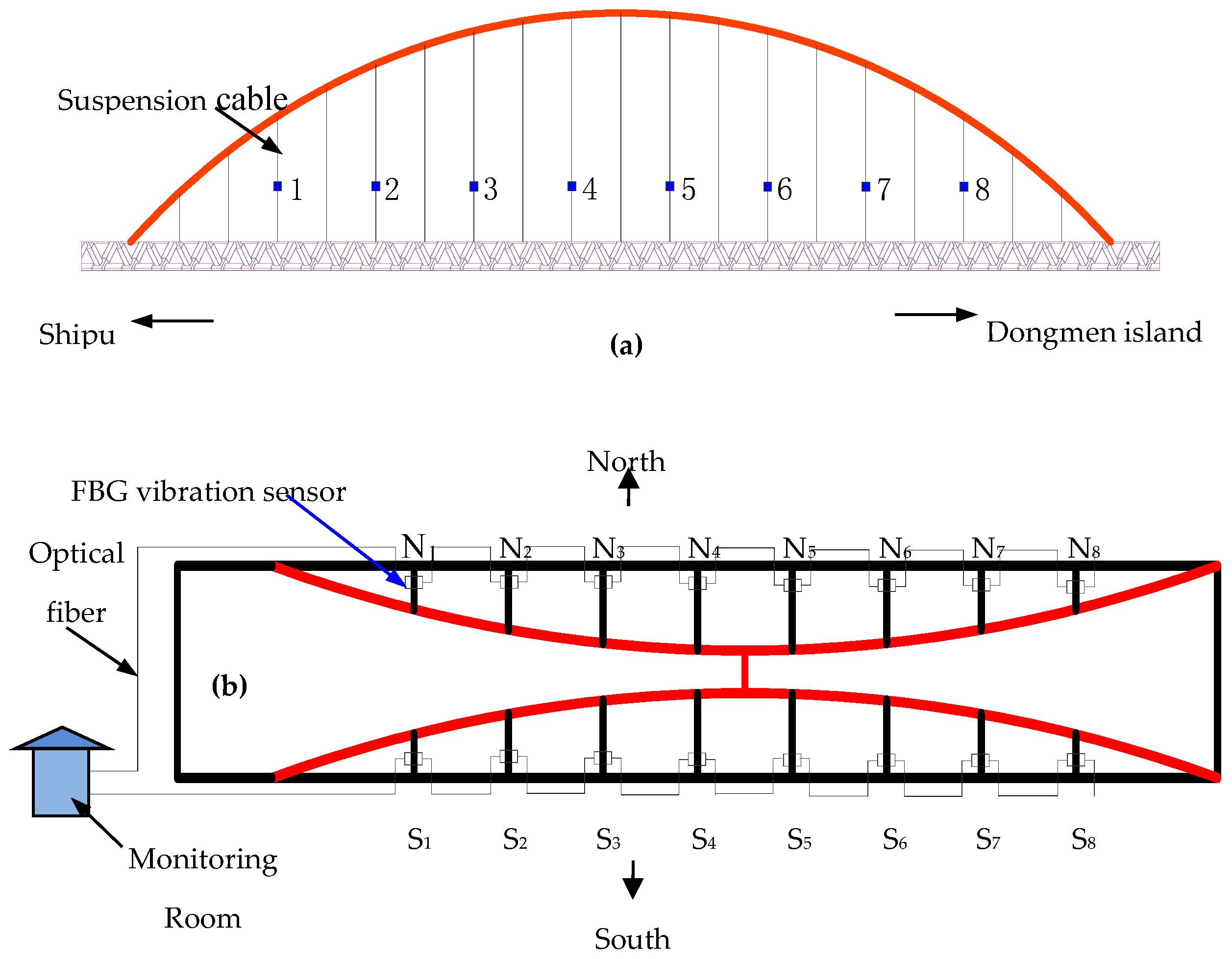


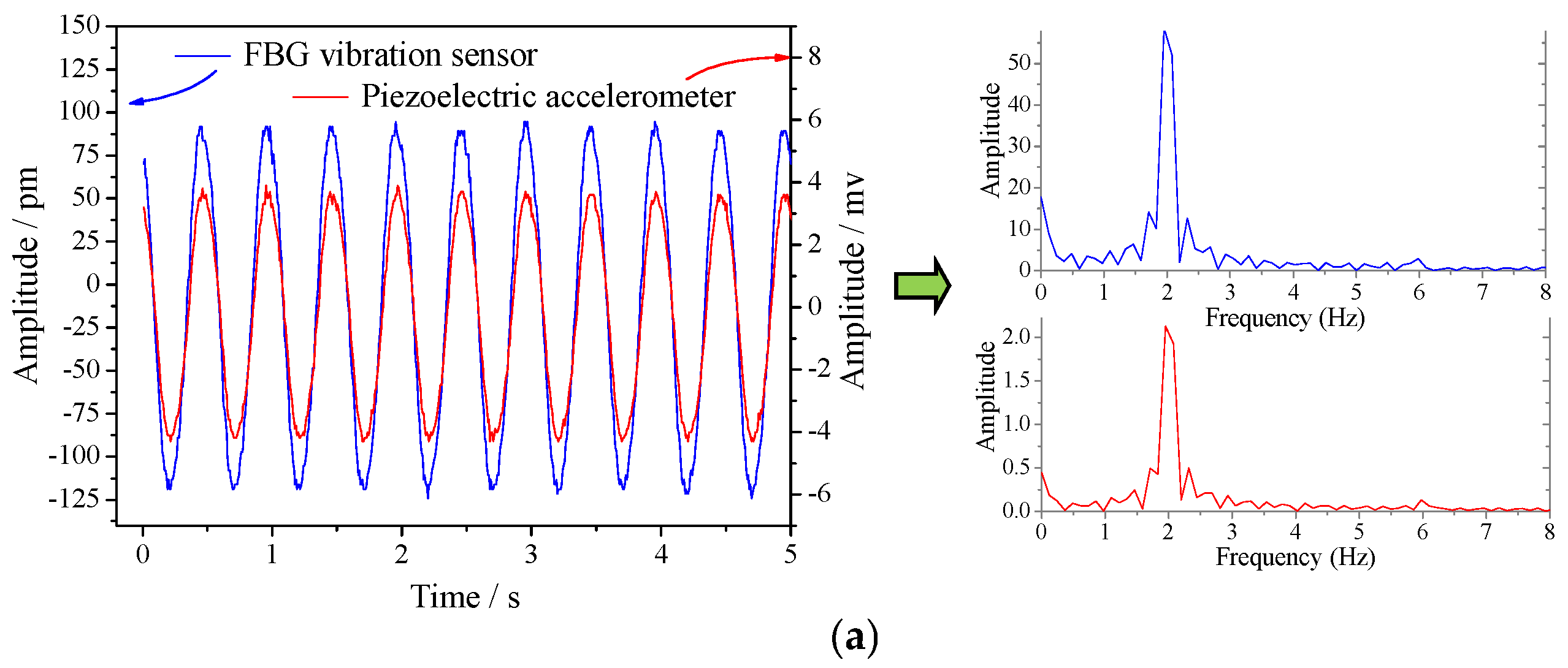
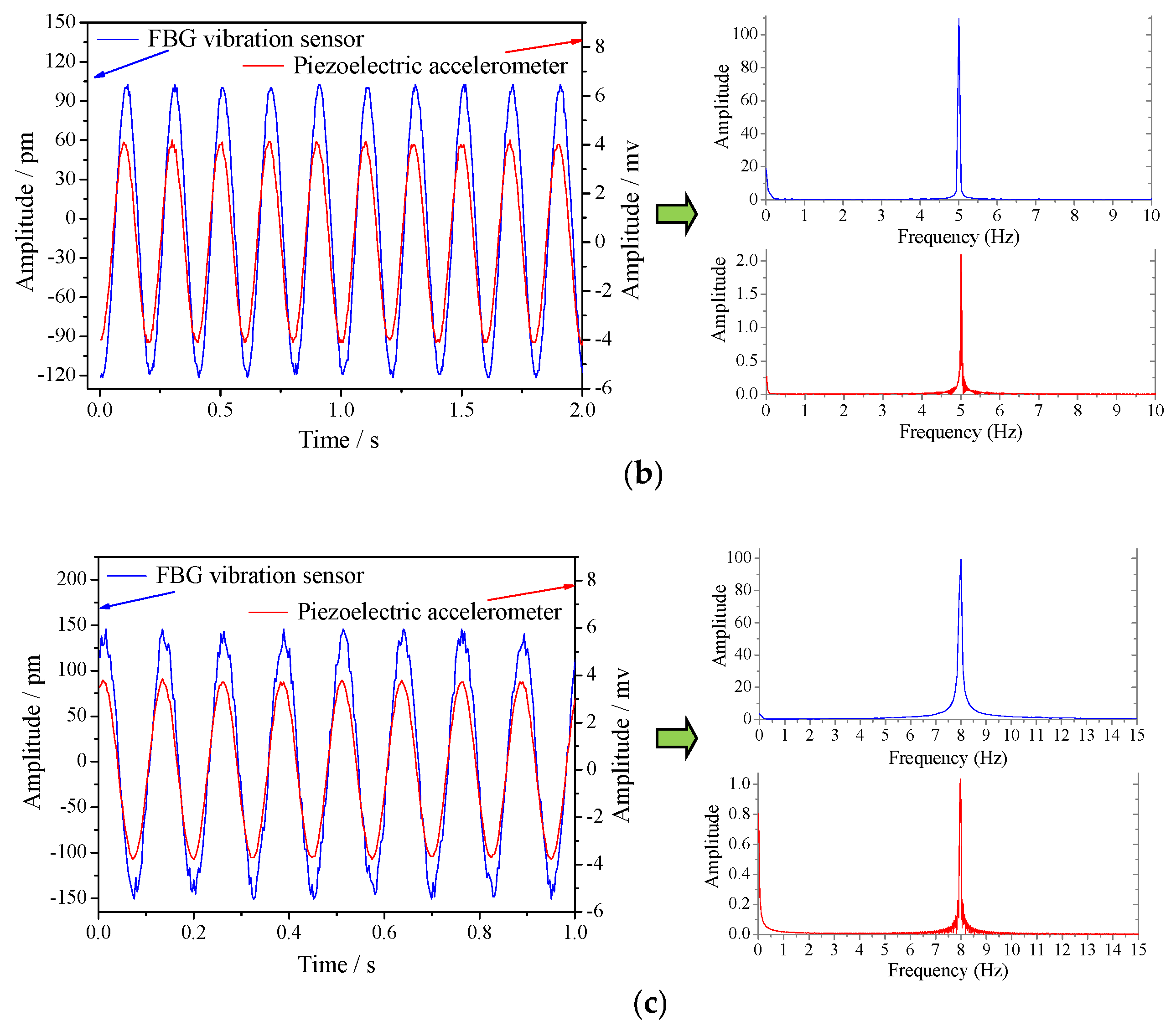
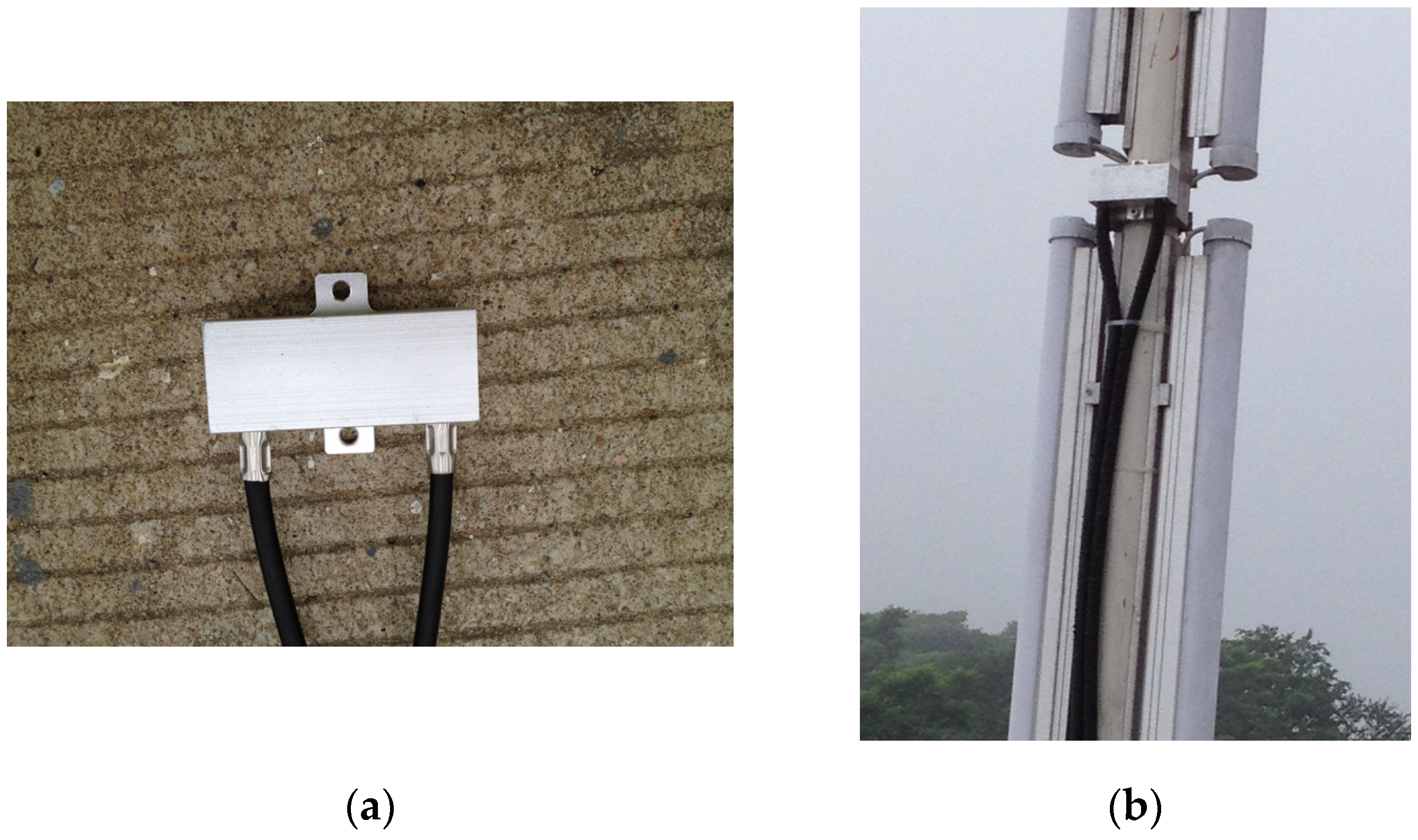
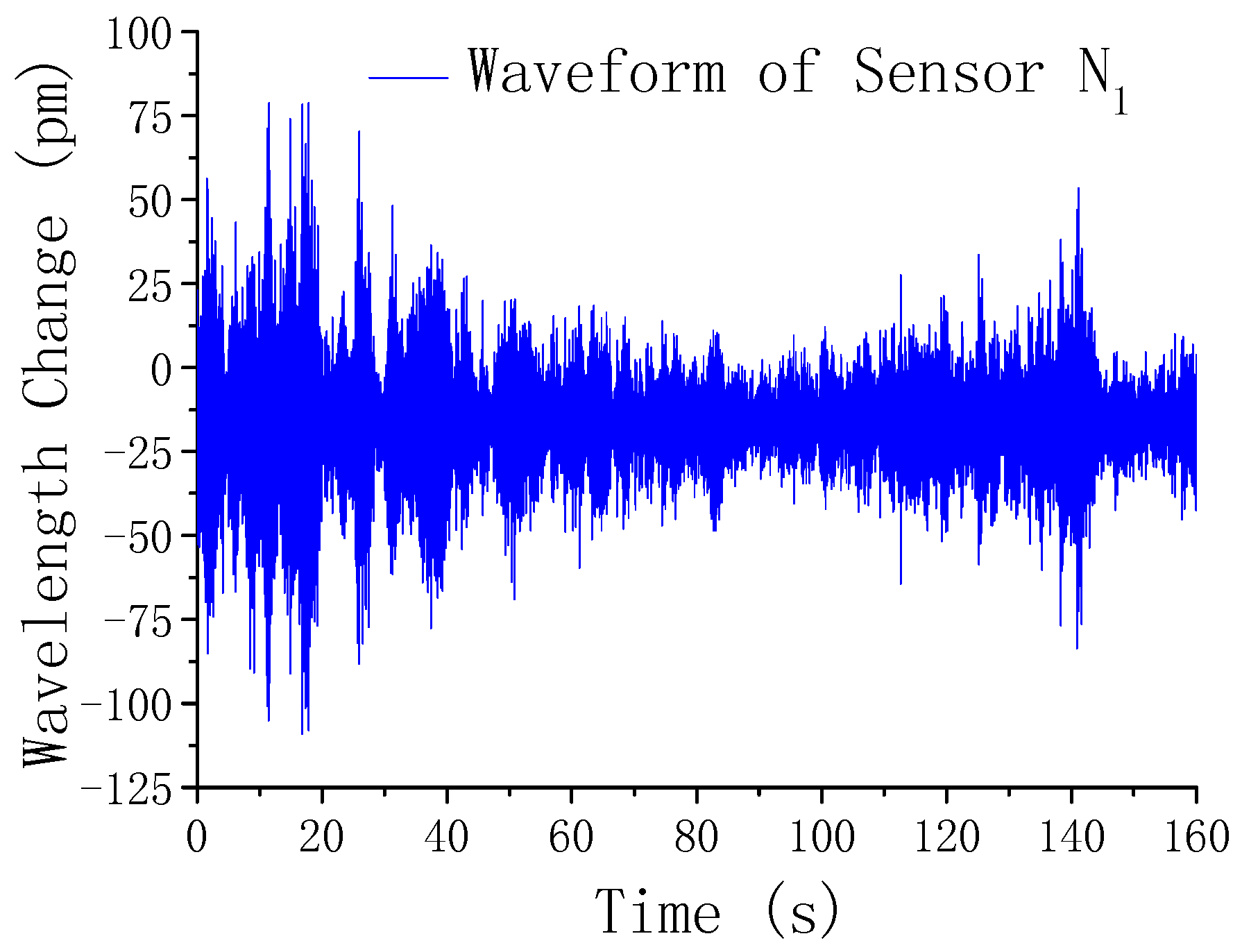

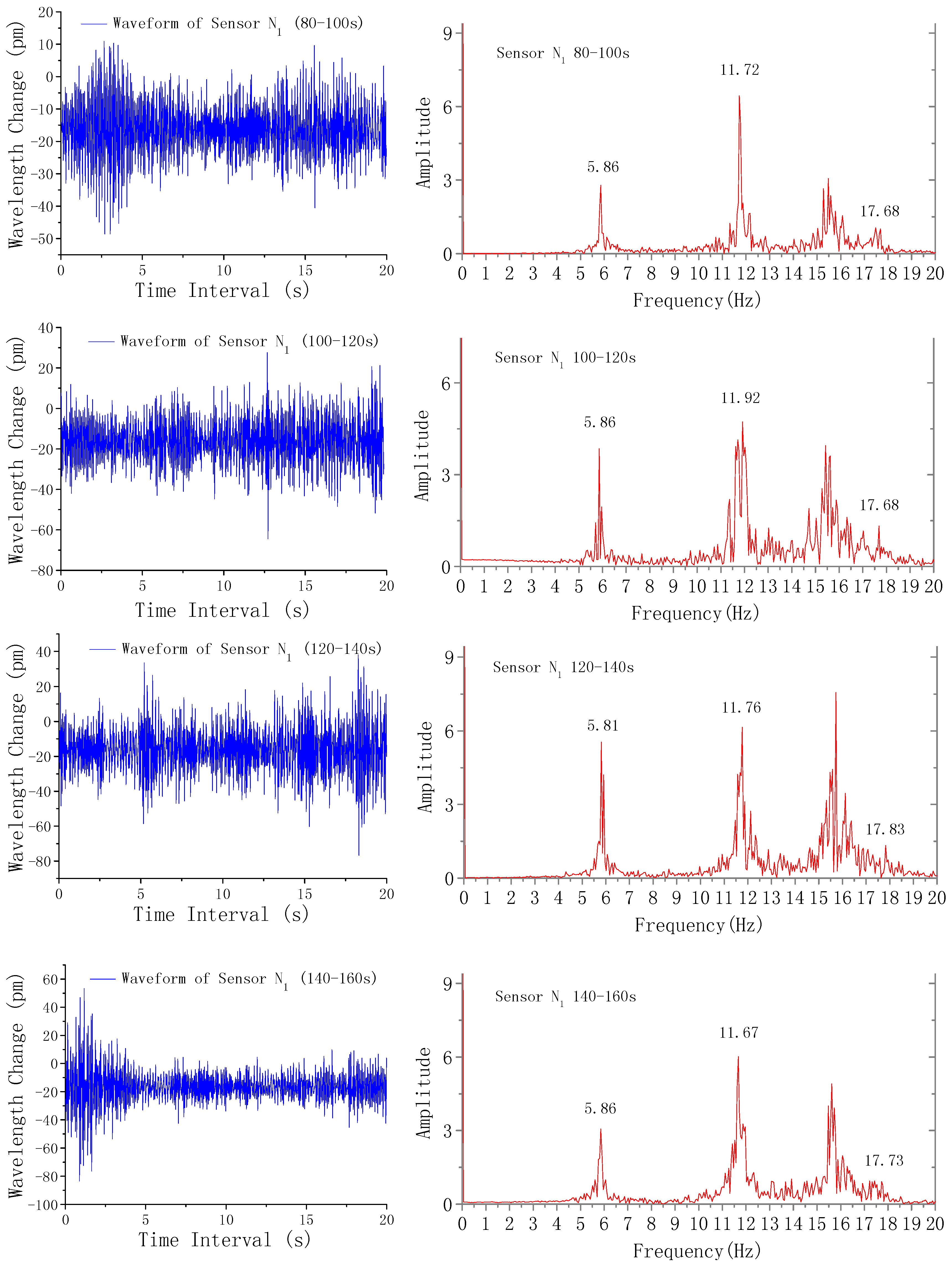
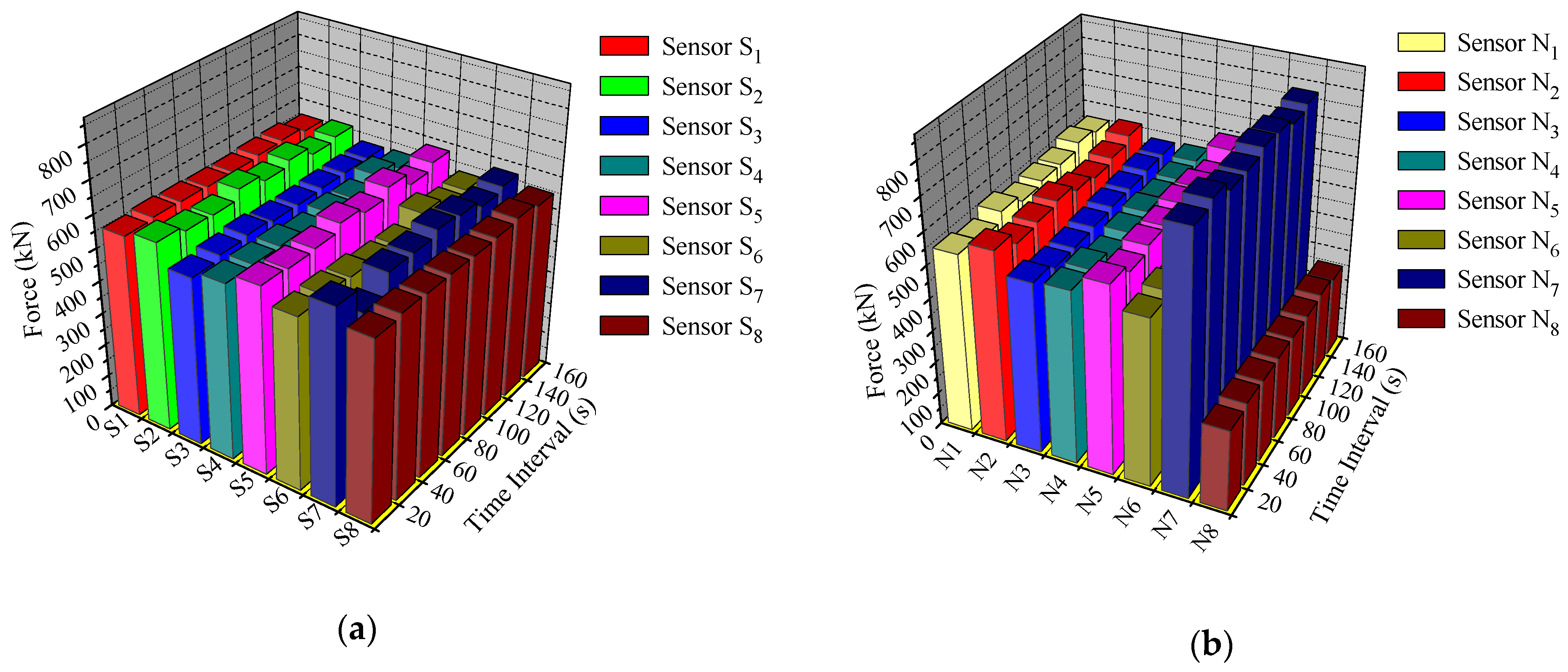
© 2017 by the authors. Licensee MDPI, Basel, Switzerland. This article is an open access article distributed under the terms and conditions of the Creative Commons Attribution (CC BY) license (http://creativecommons.org/licenses/by/4.0/).
Share and Cite
Hu, D.; Guo, Y.; Chen, X.; Zhang, C. Cable Force Health Monitoring of Tongwamen Bridge Based on Fiber Bragg Grating. Appl. Sci. 2017, 7, 384. https://doi.org/10.3390/app7040384
Hu D, Guo Y, Chen X, Zhang C. Cable Force Health Monitoring of Tongwamen Bridge Based on Fiber Bragg Grating. Applied Sciences. 2017; 7(4):384. https://doi.org/10.3390/app7040384
Chicago/Turabian StyleHu, Dongtao, Yongxing Guo, Xianfeng Chen, and Congrui Zhang. 2017. "Cable Force Health Monitoring of Tongwamen Bridge Based on Fiber Bragg Grating" Applied Sciences 7, no. 4: 384. https://doi.org/10.3390/app7040384




